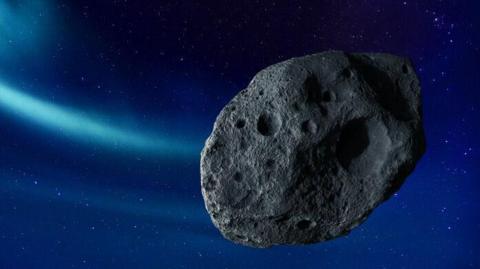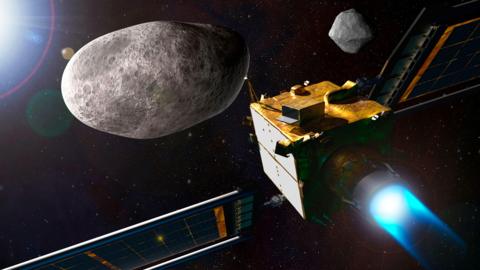UN planetary defence organisations are closely monitoring an asteroid that has a tiny risk of hitting the Earth.
The European Space Agency (ESA) has said that it has an almost 99% chance of safely passing Earth on 22 December 2032, but a possible impact "cannot yet be entirely ruled out".
The probability that the asteroid, called 2024 YR4, may impact Earth on 22 December 2032 is currently estimated to be 1.3%.
Dr Robert Massey of the Royal Astronomical Society, says that he is "not panicking or losing sleep over it".
"There is no need for alarm," he said. "The thing about this kind of event is that historically they tend to go away when the calculations are refined."
We need to be aware alert and we need to give astronomers the resources they need to track these kinds of threats so that we can take action as soon as possible."
YR4 was detected on 27 December 2024. Astronomers calculated that it was between 40m and 90m across. This would have the power of a nuclear bomb were it to hit the Earth and cause severe damage if the impact was in a populated area.
But it is much more likely that YR4 would fall into the ocean or a remote part of the planet. It is too far away from Earth and there are too many uncertainties at this stage to determine where a potential impact could occur in the unlikely event of a collision.
Since early January, astronomers have been using telescopes to calculate the asteroid's size and trajectory more precisely. YR4 is now rated at level 3 out of 10 on the Torino Impact Hazard Scale: "a close encounter that warrants attention from astronomers and the public". A collision is only certain when it reaches 8, 9 or 10, with the numbers rising in line with the damage likely caused.

